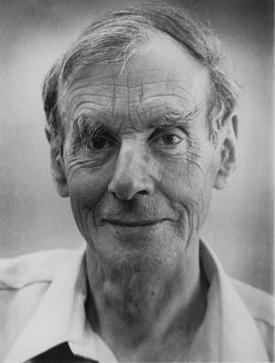Died March 15, 1991, Cambridge Influenced Brian S. Hartley | Name Robin Hill Role Biochemist | |
 | ||
Known for Hill reactionHill reagent Notable awards Royal Society (1946), Royal Medal (1963), Copley Medal (1987) | ||
Robert Hill FRS (2 April 1899 – 15 March 1991), known as Robin Hill, was a British plant biochemist who, in 1939, demonstrated the 'Hill reaction' of photosynthesis, proving that oxygen is evolved during the light requiring steps of photosynthesis. He also made significant contributions to the development of the Z-scheme of oxygenic photosynthesis.
Contents
Education and early life
Hill was born in New Milverton, a suburb of Leamington Spa, Warwickshire. He was educated at Bedales School, where he became interested in biology and astronomy (he published a paper on sunspots in 1917), and Emmanuel College, Cambridge, where he read Natural Sciences. During the First World War he served in the Anti-gas Department of the Royal Engineers.
Career
In 1922, he joined the Department of Biochemistry at Cambridge, where he was directed to research hemoglobin. He published a number of papers on hemoglobin, and in 1926 he began to work with David Kellin on the haem containing protein cytochrome c. In 1932, he commenced work on plant biochemistry, focusing on photosynthesis and the oxygen evolution of chloroplasts, leading to the discovery of the 'Hill reaction'.
From 1943, Hill's work was funded by the Agricultural Research Council (ARC), although he continued to work in the Cambridge Biochemistry Department. Hill continued to receive most of his recognition for his earlier work on photosynthesis, and beginning in the late 1950s, his work concentrated on the energetics of photosynthesis. In collaboration with Fay Bendall, he made his second great contribution to photosynthesis research with the discovery of the 'Z scheme' of electron transport.
Hill retired from the ARC in 1966, although his research at Cambridge continued until his death in 1991. In his later years Hill worked on the issue of the application of the Second Law of Thermodynamics to photosynthesis.
He was an expert on natural dyes and cultivated plants such as madder and woad. He painted watercolours using pigments he himself extracted. In the 1920s, he developed a fish-eye camera and used it to take stereoscopic whole-sky images, recording cloud patterns in three dimensions.
Awards and honours
The Robert Hill Institute at the University of Sheffield, from which he received an honorary degree in 1990, was named after him. Hill was elected a Fellow of the Royal Society (FRS) in 1946, his certificate of election reads:
He was awarded the Royal Medal in 1963, and the Copley Medal in 1987.
